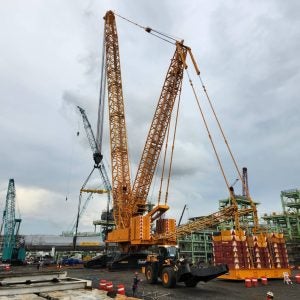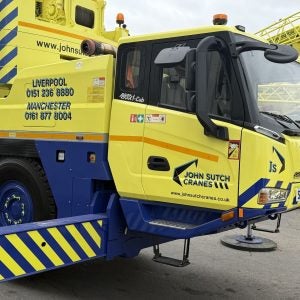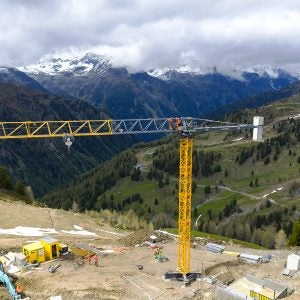Due to its solid performance in the midst of the global slump, the Polish economy has often been singled out by various economists as an example to be followed by other countries in the region.
“Poland weathered the global financial crisis with flying colours,” the World Bank says in a recent report. “It was the only EU country to expand during the global financial crisis, growing by 1.8% in 2009 compared to a decline of 4.3% in the EU- 15 countries and of 3.6% in the EU-10 region,” says the report, Europe 2020: Fueling growth and competitiveness in Poland through employment, skills, and innovation.
Moreover, Poland’s GDP growth further accelerated to 3.8% in 2010, according to figures from the state-run Central Statistical Office (GUS). The World Bank report says that this year, the country’s GDP is expected to reach 56% of the average level posted by the EU’s fifteen Western European member states, up from a mere 33% twenty years earlier. But while some findings of the report may fuel optimism, the Polish economy must also confront some major challenges, both domestically and globally.
Poland’s challenges on the horizon include the rising public debt, a 13% unemployment rate and the growing competition the country’s economy faces from other regional players. Experts point out that these negative trends have the potential to significantly undermine Poland’s current fast pace of growth.
In the Polish construction market, the mood was quite gloomy last year. Based on preliminary estimates released by the GUS, the construction market posted 3.5% growth in the January-December 2010 period. This may be slightly better than the 3.2% growth in 2009, but still significantly less than 12.1% posted back in 2008. However, there may be room for optimism, as in the first two months of 2011, Poland’s construction market was up 17.6% over the same period a year earlier, according to the statistical office.
Local construction company executives tell Cranes Today that last year’s slump was mitigated to a certain extent by orders acquired in the previous years.
“The year 2010 was relatively good for the construction industry because of contracts inked in the previous years. Unfortunately, last year did not produce many new deals,” says Jaroslaw Popiolek, chief executive of Mostostal Warszawa, a construction company based in Warsaw. According to Popiolek, while Poland’s largest construction firms were capable of coping with the rising local and foreign competition, last year’s downturn was particularly detrimental to smaller businesses.
With over PLN1.8m (USD643m) in sales revenues last year, Mostostal Warszawa certainly was not part of the latter group. Still, the company’s sales were slightly lower than a year earlier, down 1.1% over PLN1.82m (USD650m) in 2009. Its net profit totaled PLN44.4m (USD15.9m) in 2010, down 40% over PLN111.1m (USD39.7m) in 2009.
Compared with 2009, last year was a period of slow, but progressive improvement in the crane rental market, says Grzegorz Zólcik, president of the board at Poland’s major crane rental company Gastel Zurawie.
Both the volume of orders and crane rental rates rose in 2010, confirms Tomasz Kwiecinski, vice-president of the company’s board. However, despite last year’s improvement, the rental rates in Poland have remained below the pre-crisis level, Kwiecinski says.
“Crawler crane rental is a niche market, but it currently is the most profitable one as well. Given how meagre this segment is and how steep are the rental rates, crawler cranes generate the highest profit margins,” says Piotr Guzowski, member of the board at Gastel Zurawie. “Hydraulic cranes with lifting capacities of over 100t are the second market segment with a very high profitability,” he adds.
For Liebherr Polska, the local subsidiary of the German-based manufacturer, the bulk of its sales last year was in the mobile tower crane market.
“Our sales rose in 2010, but compared to years prior there was a significantly higher demand for used cranes. This is a clear indication that the market recovery is still fragile in Poland,” says Marcin Berezowski from Liebherr Polska. “It is too early to gauge our results for this year, but we expect that, given the improving situation of Poland’s economy, we are poised to increase our sales.”
This year, the company plans to further expand its presence in the profitable segment with a range of its latest products. In March, Liebherr Polska brought the MK 88 self-erecting mobile tower crane into the Polish market.
Purchases in the pipeline
Established in late 2009 out of a merger between two leading crane rental companies, Gastel and EFH Zurawie Wiezowe, Gastel Zurawie is aiming to lure more clients by introducing new cranes to the local market. In 2011, the company will continue to develop its portfolio of services by adding new equipment to its fleet, said Guzowski. Earlier this year, Gastel acquired five new 40t cranes, including three Terex RC45 rough terrain cranes and two Sennebogen 643 R crawler cranes.
“This year, we will purchase two 45t rough terrain units and a 40t crawler crane,” says Guzowski. “On top of that, we are likely to acquire the following hydraulic cranes: two 130t units, one 200t crane and two 250t units.”
According to its Q4 2010 report, Gastel Zurawie reported a net profit of PLN1.05m (USD0.4m), compared with PLN2.73m (USD1m) a year earlier. Despite the fall in profitability, Poland’s leading crane hirer managed to increase its revenues to PLN86.2m (USD30.8m), up 18.2% from PLN72.9m (USD26m) in 2009. In Q4 Gastel Zurawie posted sales revenues of PLN25.6m (USD9.1m), up a solid 60% over the same period a year earlier.
Football boosts public spending
Meanwhile, as Poland and Ukraine are set to jointly host the Euro 2012 European Football Championship in June next year, the Polish government has boosted infrastructure spending with the aim of building new stadiums, highways and railways, as well as expanding the existing airports and train stations. In total, the country will spend about PLN80bn (USD27.5bn) on infrastructure investments related to the tournament, Adam Olkowicz, head of the Euro 2012 organising committee in Poland, told local media.
“The current growth trend in the market has been driven by infrastructure investments related to the Euro 2012 football championship, as well as those co-financed by the European Union,” says Guzowski. In 2010, Gastel’s equipment was used in construction of stadiums in Warsaw, Poznan and Gdansk, as well as in the construction works at the Wroclaw and Gdansk airports, he said.
Berezowski agrees: “Euro 2012 is definitely one of the driving forces behind numerous major infrastructure investments in Poland.”
“More than 20 of our tower cranes were used at long-term contracts at Warsaw’s National Stadium. The project was one of the largest ones in the history of our company,” says Wojciech Fait, marketing manager at Zuraw Grohmann, a crane rental business in Gdansk. The company’s tower, crawler and mobile cranes were also hired for similar construction works in Gdansk and Poznan, he says.
Besides the football championship, the Polish construction industry has particularly high hopes for the government’s investment plans in two fields, the railway and the energy industry. “We hope that the railway modernization programme will be launched soon,” says Popiolek. “Everyone is also looking forward to the [planned construction works] at power plants and transmission lines.”
Local crane users are hoping to get a piece of the booming wind market. While coal accounts for nearly 90% of energy produced in Poland, the country has embraced renewable energy sources in recent years. Between 2005 and 2010, Poland’s installed wind capacity expanded from 83MW to 1,180MW, up over 1400%, according to latest figures from the Polish Wind Energy Association (PWEA).
Fait says: “The year 2011 will be marked by further investments in the wind energy industry, where we operate our largest units, mostly crawler and lattice-boom cranes.”
Poland is also aiming to build a new central airport by 2020, as recently announced by the Ministry of Infrastructure. The facility is to be located between Warsaw and Lodz, and its construction will cost at least €3.1bn.
But despite the Euro 2012 preparations, so far this year orders from the public sector have declined, company representatives say.
“In the first three months of the year, the demand for crane rentals from the public sector was lower than in the same period last year. In 2010, it was one of the prime forces behind new construction projects,” says Rafal Zaloga from CT Zuraw, a crane rental company and the sole dealer for FM Gru models in Poland.
Zaloga argued that while Poland’s crane rental market expanded last year, it still has not reached its pre-crisis level from 2008. “Our customers are very price-sensitive,” he says. Due to the recent economic woes, the best-selling cranes are second-hand units, according to Zaloga. Also, a growing number of clients opt for more energy-efficient models from Italy’s FM Gru, such as the 1350 TLX, 1355 TLX and 1365 TLX tower cranes. “The strongest demand for crane rentals is from housing and shopping centre projects,” says Zaloga.
Fait says that with the expected completion of the Euro 2012-related investments in the near future, Zuraw Grohmann will relocate its cranes chiefly to housing and bridge-building projects.
“Clearly, the private construction sector has rebounded from its 2009 low, and we foresee that [Polish companies] will increase their investments in 2011 with the help of the EU,” Zaloga says.
“The flow of funds from the EU’s structural aid programmes is fostering the development of local infrastructure investments,” agrees Popiolek.
“We are positive that housing construction will be back on track soon, following a deep recession in the last two years,” Popiolek says. “A similar improvement is expected in commercial construction.”
A recent market report from Colliers International indicates that in 2010, Poland’s new retail space grew by 650,000 sq m, down 60% from the growth rate in 2009. The consultancy expects that this year, the country’s total retail space will expand by a further 650,000 sq m, reaching the growth level from 2008. Presently, Poland’s total retail space is more than 8 million sq m.
“Iin the second half of the year the construction market will slightly rise, but it is far too early for optimism,” says Stanislaw Kruk, chief executive of construction company Budopol Poznan.
In the past few years, Poland’s housing boom has caused the prices of dwellings to skyrocket at double-digit rates, says Kruk. Consequently, a standstill in the real estate market has left developers with lots of unsold dwellings.
According to preliminary results from the local statistical office, a total of 17,812 dwellings were completed in the two first months of 2011, down 21.4% over the same period a year earlier. In 2010, some 135,818 dwellings were completed, down 15.1% from 160,019 in 2009.
Consequently, numerous construction companies have refocused their attention on other markets, and Budopol Poznan is exemplary of the trend. The company has shifted its efforts from apartment housing projects and residential housing, following the lack of supply in this sector, as well as to hospital and healthcare facility construction, which is currently experiencing a steep rise in funding, says Kruk.
Consolidation tide rising
Zaloga believes that the Polish crane rental industry is still very fragmented, and its eventual consolidation would be a lengthy process.
“Economic hardship in the past few years has undermined the financial stability of numerous crane hire companies, accelerating the consolidation in Poland’s crane industry,” says Fait. “Last year, our company was acquired by a foreign investor, the Belgian Sarens Group, a world-class leader in lifting services.”
Asked about potential acquisitions by Gastel Zurawie, Guzowski says there are currently no such plans, but adds they are monitoring the market, which is in the middle of restructuring following the downturn.
“If an attractive offer appears on the market, we may decide to step in,” he says.






